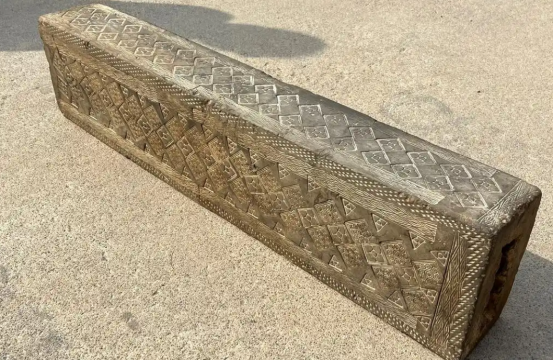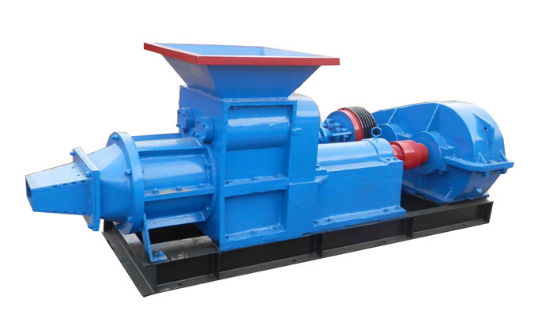Introduction
Clay bricks, known as the history of human development in the mud and fire quenched out of the brilliant crystallization, but also the long river of architectural culture in the living “living fossil”. In the basic needs of human survival — food, clothing, housing, and transportation, the evolution of residential civilization, also profoundly highlights the indispensable importance of brick and tile.
Development of Brick-Making Machines
Ancient Brick Making Technology
The “First Brick of China” unearthed in Lantian, Xi’an, spans more than 5,000 years and bears witness to the wisdom of the Chinese forefathers. Two thousand years ago, in the era of the Qin brick and Han tile, the brick-making industry was already in its infancy: the Qin Dynasty took the lead in opening the standardized production of clay bricks, laying the foundation of the process with the specifications of “one foot long, half a foot wide and three inches thick”, supplemented by the primitive processes of wooden mold making, stone crushing and human and animal treading and mixing to outline the contours of the brick-making industry in the early days. In the Tang, Song, Ming, and Qing dynasties, the introduction of the waterwheel, a water-powered mixing device, marked the transition of the brick-making process from manpower to a new stage empowered by natural forces, laying the groundwork for subsequent industrialization.
Brick-making machine technology breakthroughs
The invention of the steam engine led to industrialization, but also affected the development of the brick-making industry, changing the status quo of the previous thousands of years of manual wooden mold stripping, in 1850, the United Kingdom took the lead in the application of steam engine-driven brick-making blanks. Mechanical instead of manual, capacity increased dozens of times, and then quickly spread in Europe, and promoted the Hoffman kiln updates and improvements, in 1873 the German Schlichtson designed the active lower silo pressure clay plate shaft, 1910 the newly invented electric motor instead of the steam engine, so that the screw extruder brick machine is more convenient, the equipment is more compact, screw extrusion to make the clay shaped, and has become the mainstream of the brickmaking industry.
Ordinary brick machines mainly through the screw rotation of the raw material pressurized extrusion into rectangular clay bars, and then through the cutting bar cutting machine cut into brick blanks to meet the size requirements. Simply put, an ordinary brick machine is a reducer plus a screw rotating in the mud cylinder on a base principle.
The birth and popularization of the vacuum brick-making machine
The German Linge company in 1930 for the first time a vacuum pump for brick machines, the introduction of the vacuum machine brick-making machine. The working principle is that before the screw starts
extruding the raw materials, the vacuum pump pumps out the air in the raw materials, minimizes the negative pressure in the brick confidential sealing bin, reduces the air in the billet, eliminates the billet air bubbles, and further enhances the compactness and strength of the billet.
In the 1950s, China introduced brick-making technology from the former Soviet Union, opening the curtain of industrialized brick production. In 1978, with the pace of reform and opening up, Europe and the United States advanced brick-making technology was introduced into the country, and the first vacuum bipolar extruder-type brick-making machine came into being. This technology took the lead in Henan, Shandong, Heilongjiang, and other places to take root, and quickly formed a large-scale production pattern.
Improvement of Vacuum Brick Making Machine
Clay Brick Making Machine in China’s brick machine industry shows excellent innovative vitality — not only actively absorbing the essence of international technology, but also promoting localized improvement with wisdom and craftsmanship. Take Henan Wangda Brick Machinery Factory as an example, its “Wangda” brand JKY55/55-4.0 and above models have realized a number of key technological breakthroughs, which have become a benchmark example for the industry’s upgrading.
1. Reducer system: hardened gears and forced lubrication
reducer adopts a hardened gear system and a strong lubrication device. The hardened gears are processed through a heat treatment process, and the processed gears are refined again after seepage, quenching, and normalizing to eliminate defects and stress concentration. The gears that have been heat-treated are hardened gears. And then toughness is not reduced at the same time, improving the hardness of the tooth surface, and increasing the strength and wear resistance, forced lubrication is through the gear pump to the lubricating oil through the oil pipeline to the lubrication parts, so that each gear surface and each bearing to get the optimal amount of oil to reduce wear and tear of the components, increase the service life.
2. Spindle structure: holding shaft type connection and floating shaft process
The spindle adopts the holding shaft type connection, which ensures the concentricity of the big shaft and avoids the oscillation of the machine body. The spindle base adopts thrust bearings, double spherical bearings with the use of. Bearing seat with asbestos disk with oil sealing and other multi-channel sealing to ensure the sealing of the vacuum box. The main shaft in the mud cylinder is improved with the socket floating process, the floating shaft can be self-defined Chongqing after the raw material enters you just. Floating shaft process so that the main shaft never breaks, self-centering to avoid the large shaft bending caused by the body swing.
3. Main spiral: variable pitch design and high chrome alloy material
Main spiral improvement, first of all, in the pitch of the variable pitch design, the use of feeding, and strong pressure. Pressurization, strong extrusion process, so that the billet compactness increased by 30%, the strength of wet billet to Mu4.0 or more, wet brick billet yard height of about fifteen layers, ordinary brick machine wet billet yard seven layers. The spiral material is made of high chrome alloy, the life is 4-6 times of the ordinary carbon steel spiral, which makes the spiral wear-resistant, increases the service life, and reduces the number of maintenance.
Post time: Jun-10-2025


